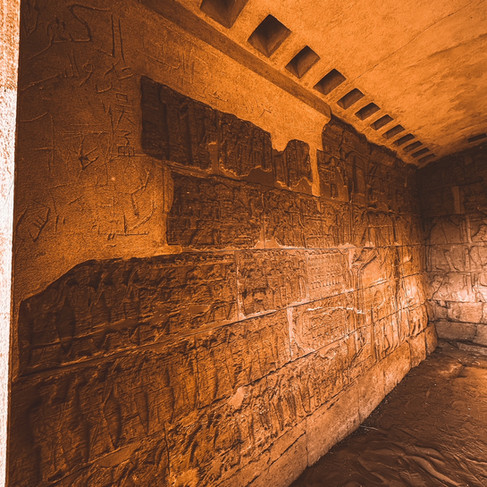Visiting the Lost Pyramids of Meroe – A Travel Guide to Sudan
- Ankitha
- Feb 1, 2023
- 5 min read
Updated: Aug 29
January 2023
Once the largest country in Africa, Sudan has been reduced in size and reputation, often associated with political turmoil or unfair comparisons to Egypt.

My travel mantra is simple: life’s too short for cliché trips. So I kicked off 2023 in true form — solo, and on a mission to uncover one of Africa’s best-kept secrets — Sudan. A land of ancient pyramids, kind shepherds, camel kisses, and starlit desert skies.
But this country deserves better — and so do curious travelers like us.

Sudan Itinerary (4–5 Days)
Day 1: Khartoum City Tour
Day 2: Drive to Meroe + Sunset at the pyramids
Day 3: Sunrise + Tomb exploration + Overnight camping
Day 4: Nile Confluence Cruise + Omudurman Market
TABLE OF CONTENTS
Flights & Visa for Sudan
I flew with FlyDubai straight into Khartoum. Here's the visa breakdown:
Entry Permit (before travel): Get this through a local agency like Tumbus Tours
On Arrival in Khartoum: $100 for visa, $60 for passport registration
Bring exact USD bills (preferably pre-2018 and in pristine condition)
Best Time to Visit Sudan
November to March is ideal — the desert heat is manageable and sunrises over Meroe are divine.
Language & Currency
Language: Arabic is dominant, but basic English is understood in Khartoum.
Currency: USD is widely accepted. Avoid local ATMs; exchange a small amount for local use.
Guide or Independent Travel?
While Sudan is relatively safe, I recommend hiring a local guide like Tumbus Tours, especially if you're traveling solo. For the adventurous and budget-conscious, independent travel is possible — Google Maps marks the main sights.
Where I Stayed
📍 Acropole Hotel, Khartoum Simple, clean, with hot water, Wi-Fi, and a hearty breakfast. Reliable pick for travelers.

Vegetarian Food in Sudan
While options are limited, chefs tried their best! Expect:
Falafel
Salads
Fatteh
French fries
Dry flatbread
Endless cups of sweet tea
Highlights of Khartoum
Khalifa House Museum
Once home to the successor of the Mahdi, this museum holds weapons, relics, and photographs from Sudan’s uprising.

Mahdi’s Tomb
A spiritual site with Sufi singers performing live odes, just outside the mosque.
Omudurman Market
Dating to the 1800s, this souk is chaotic, loud, colorful — pure African charm.
Corinthia Hotel Rooftop
Locals call it Burj Al Fateh. From here, watch the White and Blue Nile merge in one of nature’s most poetic junctions.

Meroe Pyramids: Sudan’s Timeless Wonder
A 5–6 hour drive from Khartoum takes you to Meroe, a UNESCO-listed necropolis. Once a royal city of the Kushite Kingdom, it now stands in majestic solitude.

Here you’ll find over 220 pyramids — more than Egypt itself. Though smaller in scale, each holds centuries of history and untold stories.
The Kushite pyramids, built long after Giza’s, are steeper in design with tombs carved into the rock beneath. Their unique architecture sets them apart from Egypt’s grand monuments.

An entry ticket costs only about $10, making it one of the most affordable UNESCO heritage sites to visit.
What makes Meroe even more magical is the quiet, untouched atmosphere. You can wander freely without the crowds that usually surround famous pyramids.
For me, the most striking feature was the orange desert sand glowing at dusk. It cast a mystical light across the pyramids, heightening their allure and timeless mystery.

Overnight Camping at Meroe
Sleeping under the stars, nestled between pyramids, with no light pollution — it was spiritual, silent, and surreal. Bring warm layers — desert nights are cold even in Feb!
Sunrise at the Pyramids and Exploring the Tombs
In the freezing morning air, I hiked up to catch the first glimpse of the pyramids at sunrise. The sight was nothing short of spectacular. All the doors face the sun — little details like this make me marvel at the brilliance of ancient builders.
Bundled up, I stood for hours as the sun slowly rose in the east, casting light across the pyramids. Watching them reveal themselves with the dawn was a mind-blowing experience.

Some pyramids have their tops chopped off — scars left by treasure hunters in their quest for riches. Restoration work is underway, but progress is slow.
Stepping inside the tombs felt like walking into history itself. Just like in Egypt, hieroglyphics adorn the walls, and I was enthralled by every intricate detail.
With so many pyramids spread across Meroe, it’s best to start early. Wander around, peek inside and outside, and soak in every corner — the details will leave you craving for more.
Southern Cemetery
Across the road from the northern side lies the Southern Cemetery. While the northern pyramids were built for Kushite kings and rulers, these smaller structures belonged to nobles and individuals of lower rank. Their scale may be modest, but together they paint a fascinating picture of the social hierarchy of the Kushite era.
Naqa and Musawwarat es-Sufra
If you have extra time, consider venturing beyond Meroe to explore Naqa and Musawwarat es-Sufra. These ancient temple complexes, just a short drive away, offer a glimpse into the religious and cultural life of the Kushite Kingdom. The trip does take a few hours, so it’s best suited for those who don’t mind cutting short their time at the pyramids. Still, if you’re drawn to history, the journey is well worth it.
Sunset Cruise on the Nile
One of Khartoum’s most iconic sights is the confluence of the White and Blue Nile. I took a two-hour sunset cruise to witness it, and while the meeting point looked more like a swirling, muddy mix than a dramatic divide, it was still fascinating to see. The boat ride itself was equally rewarding, offering sweeping views of the city bathed in golden light as the sun dipped below the horizon.

To end my journey, I wandered through the local market — a lively hub of art, crafts, and everyday life. Meeting locals and soaking in the cultural energy of Sudan felt like the perfect way to close the trip.
Final Thoughts
Sudan isn’t a mainstream bucket-list destination — and that’s exactly its charm. With little tourism and few comforts, it feels raw, authentic, and far removed from polished tourist trails. If you’re fascinated by ancient civilizations and curious about places often overlooked, Sudan will surprise you in the best ways.

Traveling here pushed me out of my comfort zone, showed me immense kindness, and left me in awe of its pyramids, desert, and solitude. It’s not for those seeking ease or predictability, but for adventurous travelers ready to rough it out, Sudan offers a truly radical and unforgettable experience.
Drop a comment below or DM me on Instagram for questions or tips!
Love,
Anki
More African Hidden Gems:
Wayfarer Footprints has captured the imagination of explorers and dreamers across the globe. Our travel journey—filled with immersive adventures, honest insights, and practical tips—has resonated deeply with readers who seek meaning beyond the map. From solo travel stories to offbeat discoveries, we’re proud to have been recognized by both Indian and international media.












































































Comments